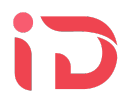Table of Contents
Dive into the linguistic labyrinth and decipher ‘What Does EOM Stand For’ – demystifying jargon for clarity and insight into acronyms. Decode now!
EOM is a common acronym used in business settings that stands for “End Of Month.” Understanding what EOM represents and how it’s used in context can help provide clarity in workplace communications. This comprehensive guide will explain everything you need to know about the meaning of EOM and how it’s applied.
An Overview of EOM
EOM or End Of Month is a term used to specify deadlines, targets, reporting, and billing that needs to be completed by the conclusion of a calendar month. For example, a manager may set an EOM sales goal that the team needs to hit before the month wraps up. Or an accounting department may send out EOM invoices to clients on products/services rendered over the past month.
Here are some examples of how EOM is commonly used in business contexts:
- EOM reports – Monthly reports that analyze performance over the past month.
- EOM projections – Forecasts and estimates for end-of-month results.
- EOM deadlines – Due dates for assignments and tasks falling on the last day of the month.
- EOM billing/invoices – Invoices sent to customers at month’s end for that month’s business.
- EOM goals/targets – Monthly objectives and metrics meant to be achieved by month’s end.
- EOM statements – Account balances reflecting month-to-date activity.
So in essence, EOM denotes something that wraps up, concludes, or happens at the end of a month. It’s a way to specify the timing of an event or activity taking place monthly.
EOM Abbreviation
EOM is a common abbreviation for:
- End of Month – Used to specify deadlines by the last day of the month.
- Extraocular Movements – Used in ophthalmology to refer to eye movements controlled by eye muscles.
- End of Manufacturing – Used in manufacturing to indicate production on an item is complete.
- End of Message – Used in email and communications to signal the conclusion of a message.
- End of Mission – Used in military and aviation to denote the end of an operation or mission.
- End of Media – Used in audio and video editing to specify the end of a media clip or file.
- End of Memory – Used in computing to indicate the final addressable memory location.
So in summary, EOM is an abbreviation that can stand for End of Month, End of Manufacturing, End of Message, and several other “End Of” terms depending on the context. The time-related meanings are most prevalent in business settings.
Why Is EOM Important in Business?
Setting EOM deadlines and goals is a common management practice in companies across many industries. Here are some of the key reasons why EOM is an important concept:
- Motivates urgency – EOM targets encourage employees to work diligently to complete objectives before the month is up.
- Measures progress – EOM reports help evaluate the status and progress made over the last month.
- Closing out accounting – Sending EOM invoices and finalizing statements helps close the books on that month’s financial activity.
- Aids planning – Analyzing EOM results helps inform plans and forecasts for the upcoming month and quarter.
- Streamlines billing – Standard EOM billing cycles make it convenient for customers to manage invoices.
- Creates accountability – Employees and teams are held accountable for hitting EOM goals.
Setting monthly goals and deadlines essentially keeps everyone on track and on schedule. The regularity of EOM activities creates order, routine, and cadence in business.
Examples of EOM Used in a Business Context
To provide more clarity, here are some examples of how EOM is actually used in workplace scenarios:
- “Our team’s EOM sales goal is to generate $50,000 in new revenue by the 31st.”
- “I need you to send out all remaining EOM invoices by Friday.”
- “In the September EOM report, you’ll see that website traffic was up 30% from August.”
- “Our CFO wants final EOM expenditure numbers on his desk first thing Monday morning.”
- “We missed our EOM customer renewal target by 5 clients last month.”
- “Can you please have your EOM status update ready to present at the staff meeting?”
- “EOM financial statements will be sent next week with account balances as of September 30th.”
What Does EOM Stand For in Businesses
There are certain standard monthly deadlines commonly set for EOM in the business world:
Monthly financial close
Accounting departments strive to close the books and finalize financial statements by EOM. This allows them to surface an accurate picture of monthly profits/losses and expenses.

Payroll finalization
Payroll must be fully processed and finalized by the end of the month to ensure employees are paid accurately and on time.
Monthly reports
Teams across the business compile EOM reports to summarize monthly performance. These are often presented at monthly all-hands meetings.
Invoicing
Getting invoices out to customers by EOM is ideal for timely payment collection.
Goal tracking
Managers assess progress made toward EOM goals and document results.
Project updates
Project managers collect EOM progress reports from teams before the month’s end.
Budget status reviews
Departments check in on budget status and spending relative to plans at month’s end.
Leadership meetings
Executives and managers conduct EOM leadership meetings to identify issues and highlight successes.
EOM Checklists Help Keep Business Areas on Track
Many companies use EOM checklists to ensure departments stay on top of key end-of-month activities. Here are some examples:
Sales EOM Checklist
- Finalize new deals in the pipeline
- Send invoices for completed sales
- Outreach to customers with outstanding payments
- Complete customer reports/account reviews
- Update sales forecasts for next month
Marketing EOM Checklist
- Pull analytics and engagement data
- Compile monthly reports on campaigns and traffic
- Send newsletters and email blasts
- Confirm next month’s content calendar
- Brainstorm new campaign ideas
HR EOM Checklist
- Process and post payroll
- Ensure employee benefits are up-to-date
- Send new hire paperwork to the accounting
- Schedule next month’s training sessions
- Review open roles and recruitment status
Executive EOM Checklist
- Review company financial statements
- Hold leadership team status meeting
- Finalize budgets for next quarter
- Check-in on departmental EOM progress
- Set company priorities and objectives for the new month
Having standardized EOM checklists promotes consistency and ensures nothing falls through the cracks as the month closes out.
Why the End of the Month Matters
You may be wondering why activities, reports, and goals center specifically around the end of the month. There are a few reasons why this timeframe is important:
- Closes accounting period – The end of the month represents closing the books on that month’s financials.
- Allows monthly analysis – Full month’s data allows for comprehensive reporting.
- Lines up to calendar – Month-end is a natural deadline aligned to the calendar.
- Comfortable cadence – Monthly deadlines aren’t too frequent or infrequent.
- Promotes timeliness – Monthly deadlines instill urgency rather than delay.
- Easy to remember – Month end provides a consistent and memorable cutoff.
- Motivates employees – EOM goals rally employee effort before time runs out.
In summary, the end of the month provides a regular and defined checkpoint to keep business operations running smoothly. Establishing clear EOM deadlines, checklists, goals, and reports ensures critical activities don’t fall through the cracks. The EOM provides an action-forcing mechanism to increase accountability, measure progress, and button up the prior month.
Key Takeaways About EOM
- EOM stands for “End of Month” and denotes monthly deadlines.
- It is commonly used in business to set reports, goals, invoices, and plans due by month’s end.
- Setting EOM targets creates urgency, accountability, and routine.
- Standard EOM activities include closing financials, sending invoices, analyzing reports, and holding meetings.
- Checklists help departments finalize EOM activities.
- The month-end aligns with the calendar and allows for comprehensive reporting and analysis.
- Overall, EOM improves timeliness, motivation, and performance.
What Does EOM Stand For in Ophthalmology?
In ophthalmology, What Does EOM Stand For, It stands for “Extraocular Movements”. This refers to the movements of the eyes that are controlled by the muscles attached to the eyeball.
Some key points about EOM in an ophthalmology context:
- Used to evaluate how well eye muscles control eye movement and coordination.
- Testing EOM is an important part of an eye exam.
- Doctors will ask patients to follow objects like a pen with just their eyes while keeping their heads still.
- Tracking problems could indicate issues like strabismus, nerve disorders, or muscle weakness.
- Six muscles control eye movements – medial rectus, lateral rectus, inferior rectus, superior rectus, inferior oblique, superior oblique.
- EOMs include versions (both eyes move together) and vergences (eyes move in opposite directions).
- Adduction, abduction, elevation, and depression are types of version EOMs.
- Convergence and divergence are types of vergence EOMs.
- Slow or limited EOMs can make it hard to read or drive and cause headaches or double vision.
Checking EOMs allows ophthalmologists to fully evaluate eye alignment and coordination critical for proper vision. Great Post to read suicide prevention coat hooks.
What Does EOM Stand For in Accounting?
In accounting, EOM is an abbreviation for “End of Month” that refers to closing activities and deadlines at month’s end.
Some key points about how EOM is used in accounting:
- Completing accounting adjustments and entries for transactions through the end of the month.
- Reconciling balance sheet accounts like bank statements.
- Calculating depreciation, amortization, accruals, etc. for a full month.
- Running month-end reports like profit/loss statements, and balance sheets.
- Finalizing monthly payroll.
- Evaluating performance to budget for the now-closed month.
- Invoicing clients for services through month’s end.
- Getting everything ready for audits and tax season.
- Closing the books fully for that month.
- Preparing for the new month ahead.
Meeting EOM deadlines allows accounts to accurately reflect the full month’s business and keeps the books balanced and up-to-date.
What Does EOM Stand For in Manufacturing?
In manufacturing, EOM represents the “End of Manufacturing” and signals the completion of production on a product.
Key uses of EOM in manufacturing:
- Added to manufacturing paperwork of finished goods to specify completion.
- Triggers products to be sent from the manufacturing line to the warehouse.
- Indicates production process is done, and ready for inspection.
- Milestones for tracking production schedules and throughput.
- For inventory purposes to differentiate from WIP (work in progress).
- Accounting relies on it for properly tracking costs.
- Alerts sales that products are ready for fulfillment.
- Can coordinate with EOM reporting on production KPIs.
Marking a product as EOM is an essential hand-off point between manufacturing and other functions. This milestone helps coordinate manufacturing processes.
Final Words: What Does EOM Stand For
In What Does EOM Stand For, EOM is a far-reaching acronym that reflects the many important deadlines, activities, and targets businesses set at month’s end. Meeting EOM responsibilities like financial close, reporting, invoicing, and goal progress reviews ensures the past month is properly closed out and the business can plan for a successful new month ahead. Being aware of the meaning behind EOM and its many applications can help you better navigate workplace communications and expectations.





